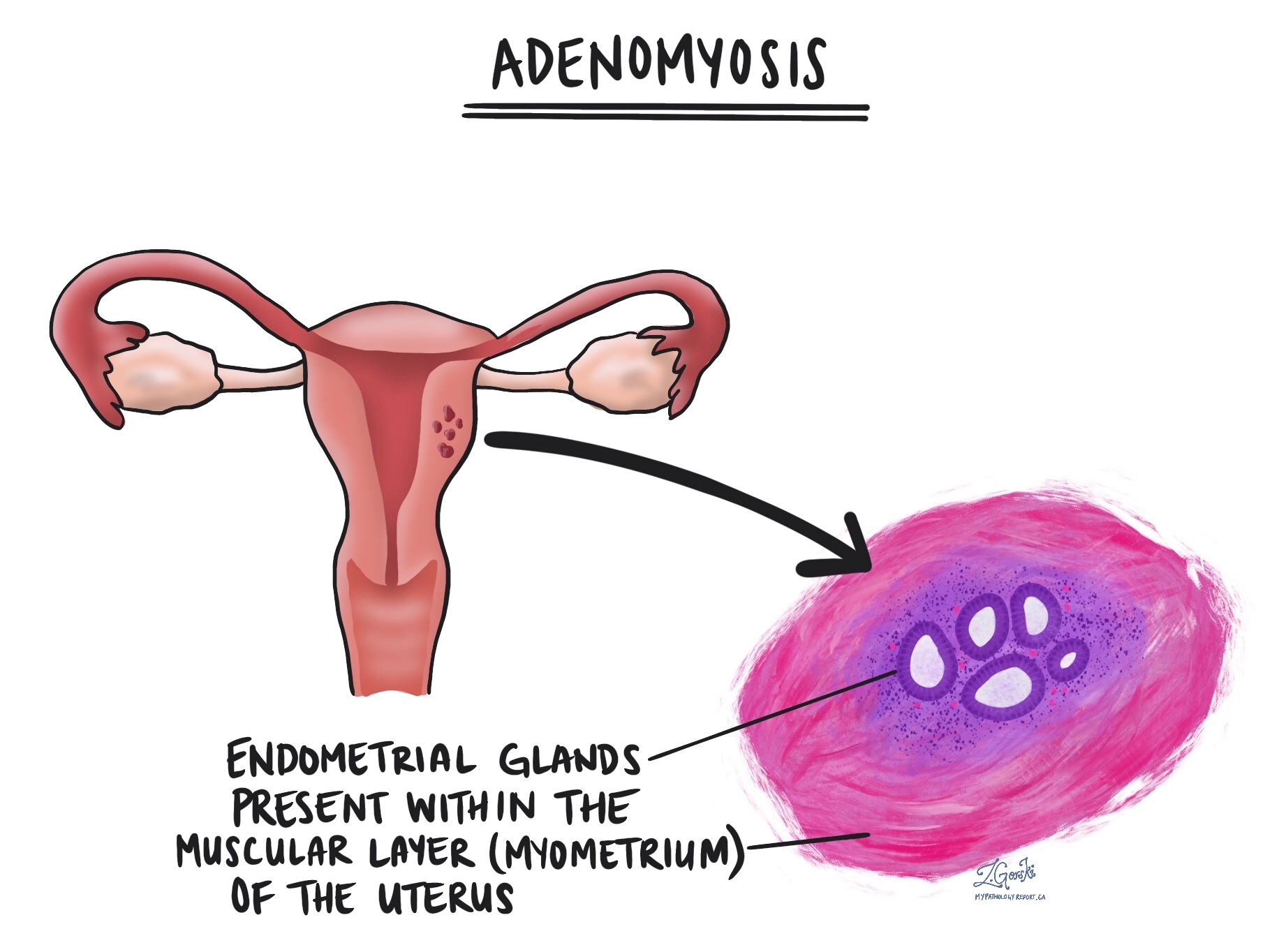Adenomyosis is a noncancerous condition that happens when tissue that normally lines the inside of the uterus (called the endometrium) grows into the muscle wall of the uterus (called the myometrium). This misplaced tissue can make the uterus larger and cause symptoms such as heavy menstrual bleeding, painful periods, and pelvic discomfort.
Adenomyosis is most often diagnosed in women between the ages of 30 and 50, and it is more common in women who have had children.
What causes adenomyosis?
Doctors are not entirely sure what causes adenomyosis, but several factors are thought to contribute. Hormonal changes, particularly involving estrogen and progesterone, may play a role. The condition is more common in women who have had children, so pregnancy and childbirth may also contribute. Adenomyosis may be linked to prior uterine surgery, such as a cesarean section or procedures to remove fibroids. Inflammation of the uterus may also increase the risk.
What are the symptoms of adenomyosis?
Adenomyosis can cause a variety of symptoms, which can range from mild to severe. These include heavy or prolonged menstrual bleeding, painful periods (dysmenorrhea), pelvic pain or pressure, and in some cases, infertility. Some women may also notice that their uterus feels enlarged or bulky, which may cause bloating or a feeling of fullness in the lower abdomen. However, not all women with adenomyosis experience symptoms.
How is adenomyosis diagnosed?
Doctors usually suspect adenomyosis based on symptoms such as heavy bleeding, severe cramps, or pelvic fullness. Imaging tests, such as ultrasound or magnetic resonance imaging (MRI), can show changes in the size and texture of the uterus that suggest adenomyosis.
The most definite way to diagnose adenomyosis is by examining the uterus under a microscope after it has been removed in a hysterectomy. For women who do not undergo surgery, the diagnosis is often made based on symptoms and imaging findings.
What does adenomyosis look like under the microscope?
When a pathologist examines adenomyosis under the microscope, they see endometrial glands and stroma (supporting tissue) embedded deep within the muscle wall of the uterus (myometrium). These glands look similar to the normal lining of the uterus but are in the wrong location. The surrounding muscle is often thickened, which explains why the uterus can appear enlarged. Pathologists may also see small areas of bleeding and inflammation around the glands, which contribute to the pain and heavy bleeding experienced by many women.

Is adenomyosis dangerous?
Adenomyosis is not cancer, and it does not turn into cancer. However, it can cause significant symptoms that affect quality of life. Treatments range from medications that control pain and bleeding to procedures that reduce blood flow to the uterus. In severe cases, a hysterectomy (surgical removal of the uterus) may be recommended.
Questions to ask your doctor
- What treatment options are available for my symptoms?
-
Do I need medications, a procedure, or surgery?
-
Could adenomyosis affect my fertility?
-
How can I manage the pain or heavy bleeding caused by this condition?



